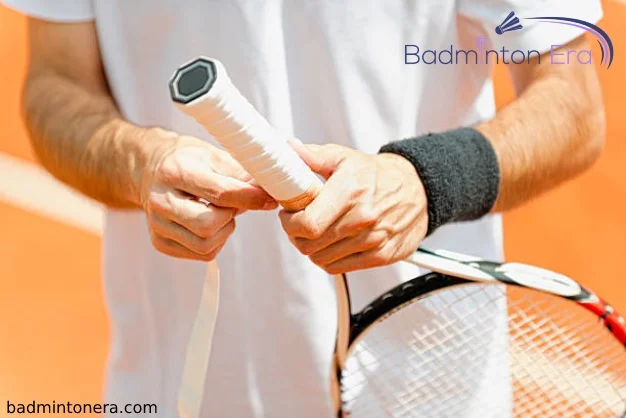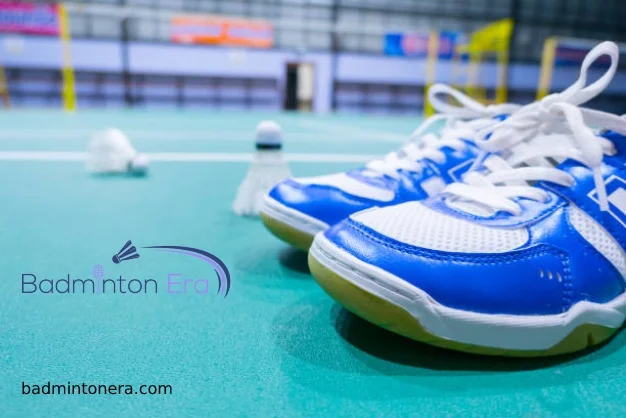What are the Common badminton injuries and possible prevention tips?
Badminton players must be aware of common badminton injuries and possible prevention tips. The reason behind it is that Badminton sport involves quick directional changes and agility. Any wrong attempt will result in injury, and cases may become severe. Sprains and fractures in the shoulder, elbow, wrist, and ankles are frequent.
Injuries make players quit playing for some time. That’s why they want to avoid it. A player, who knows about the frequent injuries and causing actions, will protect himself easily. He will be able to detect early warning signs. Let’s discuss the common badminton injuries.
5 most common badminton injuries:
Players make repeated movements of joints such as the ankle, elbow, wrist, and knee. When you continue to overuse these joints, they become damaged because of insufficient time for recovery. Important Badminton injuries include:


1. Tennis elbow:
It is a badminton injury resulting from poor backhand technique. There is a tendon associated with the upper arm bone humerus. The wrong bent in the wrist results in tendon inflammation. We can say that over usage and poor technique of arm muscles result in this injury. Athletes feel pain on the outer side of the elbow, where the tendon is present.
While holding a racket, we have to engage the muscles of our arms. This prolonged engagement, when experiencing a wrong movement, results in trauma. Tennis elbow will also occur if you grip the racket hard for a long time without recovery. With this injury, you will feel stiffness and pain around the elbow when performing any other task.
Badminton rackets also matter a lot in this problem. The size, length, and grip of the racket must be according to your style and strength. It will help you hit strong and effective shots. Heavy badminton rackets, which you cannot handle properly, will increase the chances of injury.
2. Rotator cuff tendonitis:
During the sports, players make repeated overhead movements and dominant use of an upper limb. Therefore, asymmetry in the scapula, shoulder impingement, and rotator cuff injuries occur in players. Rotator cuff muscles are supporting muscles present in the shoulder. They are responsible for keeping the arm within the socket.
When a player smashes or makes strong hits, there is high pressure in the rotator cuff muscles. It is the angle of shoulder motion that we don’t use in daily life. Continuous over usage or degenerative action can tear these muscles. It will result in shoulder pain, and full tearing occurs in serious cases. Players feel severe pain while lifting heavy objects.
3. Ankle sprain:
There are specific shoes for playing the badminton game. These are helpful in proper footing during quick movements and jumping. Players have to be on their toes to respond to the opponent players’ shots. Proper training is essential for avoiding complications. The ankle is the junction point of the leg and foot bones forming a hinge joint.
Ankle Injuries result when you lost footing and make attempt to find it. During this, all the body weight may lean on the ankle. It will bend or roll inward resulting in inversion. Many Ligaments surround the ankle for joining the two bones and moving the foot. Ligaments present on the outside of the ankle bear tremendous stretching and tearing in some cases. This ligament damage will cause:
- Reddish place
- Swelling
- Severe pain
- Bruising (bleeding within the tissues)
Jumping movements also cause ankle injuries because players must land correctly after jumps. Improper landing or slipping will bend the ankle joint.
4. Wrist sprain:
Badminton Players need to strengthen their direct muscles involved in playing. So, hitting strong shots in the game require strong wrist muscles and bones. Overuse may result in injuring your wrist, and you cannot play for some time. The affected area will become swollen and tender to the touch. The pain becomes severe if ligament tears.
Sometimes, untrained players may cause overextension in the wrist. Repetitive movement and sudden force will injure the wrist muscles or tendons. Therefore, you must be proactive in the injuries-causing actions.
5. Knee twist:
The knee is the joint between the thigh and lower leg. Knee injury is of two types because of two different ligaments that are injured. We call it a knee twist if the ACL ( anterior cruciate ligament) is injured. This Ligament joining two legs becomes torn because of any sudden twist. This portion will swell, and you may or may not feel it.
Another type is Jumper’s knee injury resulting from badminton. In this type, another ligament injures, which we call the patellar ligament, and the disease patellar tendonitis. This ligament joins the patella, the knee cap, the tibia, and the leg bone. The player with this injury feels pain in the front of the knee. It is the most tricky condition to treat.

Possible prevention tips for common badminton injuries:
Injuries are common in all sports. Therefore, badminton players also have to face them. Here are some prevention tips that will them avoid common badminton injuries.
1. Warm-up:
It is a necessary technique that players must use before any sport. To get warm up you can adopt one of these exercises:
- Gentle jogging
- Dynamic stretching
- Badminton specific exercises
- Pulse raiser
It will increase the flexibility of muscles and make them energetic. During jogging, the heart rate increases. It pumps more blood and oxygen to the muscles, to work efficiently. Exercise also makes you sharper and more active than your opponents. Activity relates to the increased speed of nerve impulses.
2. Sports massage:
It is the most important among the possible prevention tips for avoiding common badminton injuries. Massage will remove knots, lumps, and bumps in the muscles. Lumps present in the legs or arms muscles cause strain and tearing. Therefore, the players must get sports massage before playing Badminton.

3. Nutrition:
A proper diet is necessary for maintaining health. In badminton, muscles must be strong and hydrated. Therefore, proper fueling is the technique you need to apply. It is helpful because:
- Carbohydrates provide energy and fuel during hard work
- Protein will help in rebuilding the muscles if any damage occurs
- Hydration is necessary to prevent injury because the tearing of muscles often occurs in dehydrated muscles.
4. Proper equipment:
Proper badminton equipment will protect you from injuries. For example, badminton shoes have non-slippery soles because the court has a slippery surface. Players with other shoes may slip, and falling will result in the ankle, knee, and foot injuries. Similarly, rackets should be lighter and of suitable grip size. It will avoid incorrect shots hitting and wrist injuries.
Conclusion:
In every sport, the player needs to avoid traumas by applying different techniques. The same is the case with badminton sport, where you are vulnerable to injuries. The knowledge of common badminton injuries and possible prevention tips will help you in this regard. Any wrong hit or improper landing may result in painful injuries. You must consider protecting actions to keep on playing badminton sport.







